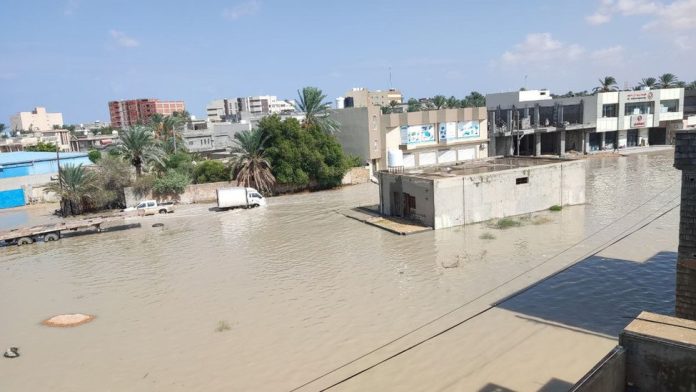A powerful storm, named Daniel, has wreaked havoc across northeastern Libya, unleashing torrential rain and extreme flooding that have caused widespread damage and an unknown number of fatalities. The devastation is particularly pronounced in the port city of Derna, where the situation is described as a tragedy and a catastrophe.
According to reports, as many as 2,000 people in Derna are feared dead, with thousands more possibly missing. The true scale of the disaster is difficult to ascertain due to disrupted telecommunication networks in the region. Apocalyptic scenes have been captured in unverified videos posted on social media, depicting a city submerged beneath floodwaters.
Libya, a country already grappling with a fractured political landscape and crumbling infrastructure resulting from years of civil conflict, faces an additional humanitarian crisis due to this natural disaster. The storm has compounded the challenges faced by a nation already divided between two rival governments.
As the storm made landfall, at least 150 people were reported dead in Derna, and the Libyan Red Crescent anticipates that the death toll will rise further. Prime Minister Osama Hamad of the eastern Libyan government estimated that around 2,000 people might have perished, emphasizing the urgent need for medical assistance. The interior minister of the same government, Issam Abu Zureibah, stated that there are areas that have been entirely swept away into the sea.
Storm Daniel initially wreaked havoc in Greece, Turkey, and Bulgaria, leading to the loss of at least 26 lives in these countries. It subsequently transformed into a “medicane,” or Mediterranean cyclone, gaining strength from unusually warm waters, a phenomenon exacerbated by climate change. The storm then moved southward, unleashing excessive rainfall over northeastern Libya.
Rainfall totals in Bayda, a city in the affected region, exceeded 16 inches (414.1 millimeters) within 24 hours, far surpassing typical September rainfall levels. This deluge has led to multiple casualties and significant damage.
While the storm is expected to continue affecting northern Egypt with heavy rains and flooding, it has weakened due to its passage over Libya’s arid terrain. Urgent international assistance and the opening of a sea corridor have been called for by local officials and council members to address this dire situation.
This catastrophic storm serves as a grim reminder of the increasing frequency and severity of extreme weather events, which are often exacerbated by climate change and have devastating consequences for vulnerable regions like Libya.



